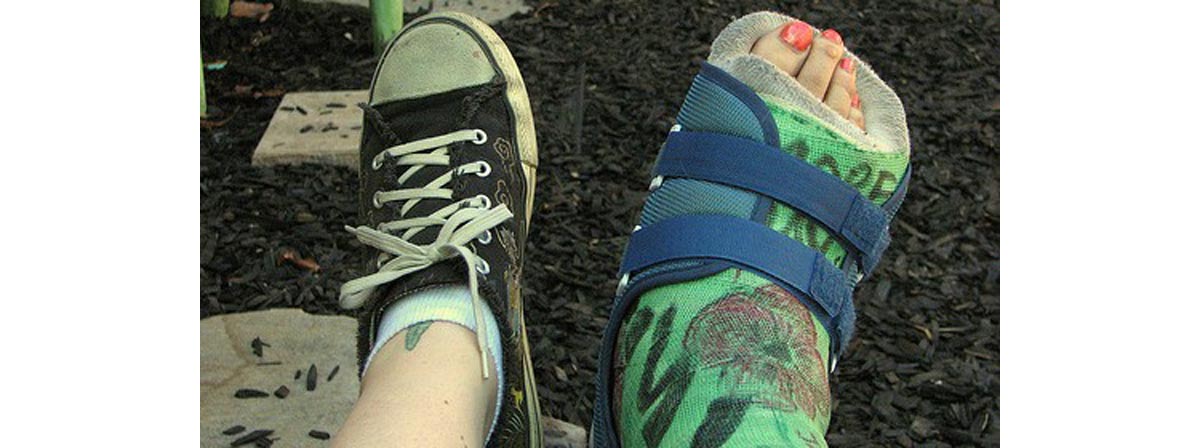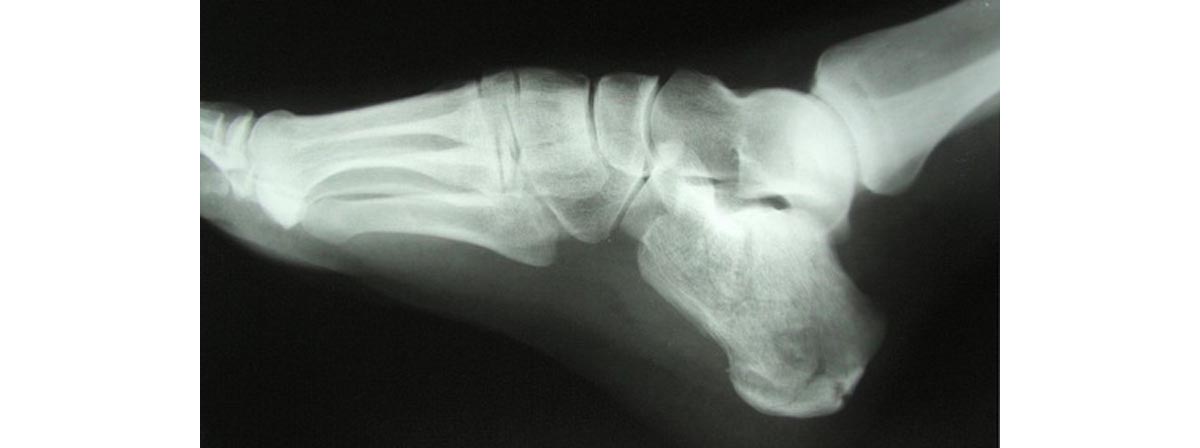Injuries to the Lisfranc joint of the foot are uncommon but must quickly be diagnosed and treated. Although fusion of the joint is a drastic step, it can be the best option to repair serious damage or when arthritis develops in the damaged joint.
What is a Lisfranc fracture or injury?
A Lisfranc fracture is an injury affecting the joints between bones in the middle of the foot. It is a painful injury that can sometimes be mistaken for a sprain. This is because fractures to the bones of the foot might not be as obvious as a broken arm or leg, as there are a lot of other supporting tissues and structures around bones in the foot.

Not all Lisfranc injuries result in bone fracture, as some instead involve the tearing of the ligaments and tendons in the area, and dislocation of the joints, while others will involve fracture(s) as well as soft tissue injury.
Lisfranc injuries were first identified in Napoleonic horsemen
The Lisfranc injury is named after Jacques Lisfranc de St. Martin, who was a surgeon in Napoleon’s army in the nineteenth century.
Nowadays, Lisfranc injuries happen to American football players but can also occur in non-sports people. I heard of a man sustaining a Lisfranc injury when pushing down too hard on his spade with his foot. But more commonly it occurs falling down a step, involving twisting as well as falling, with the foot in a vertical position. Falling forward while the foot is trapped, for example in a drain cover or down a rabbit hole, is another common cause of a Lisfranc injury.
Other causes of these injuries are crushing as in a heavy object landing on top of the foot, or the foot being run over.
Overall Lisfranc joint fractures are relatively uncommon, being 1% or less of all fractures.
Symptoms of Lisfranc injuries
The foot will be very tender and painful, with swelling on top as well as bruising to the top and possibly to the underside (sole). Standing and walking will be very painful.
If the usual treatments for a sprain such as cooling with ice, rest and keeping the foot up, do not relieve the pain and swelling, a doctor should be seen as soon as possible. Rapid diagnosis after injury improves treatment outcomes.
Diagnosis of Lisfranc injuries
To diagnose a Lisfranc injury a doctor will inspect the foot and try moving the joints, as well as asking you to perform some movements. These would normally be painless, so pain may indicate the presence of an injury.
X-rays will also be taken to look for fractures. A CT scan and MRI scan can provide more detail but are not usually necessary for diagnosis. They may be needed if surgery is required, to determine the type and extent or repair needed.
Non-surgical treatment of Lisfranc injuries
If there are no fractures, dislocations or complete rupture of ligaments or tendons, then surgery may not be necessary. A plaster cast, then a special air-filled boot or an insert in your shoe (orthosis) may be used to give support while the damage heals. You will be told not to put any weight on the injured foot for a number of weeks, and will walk with a crutch/crutches, instead.
Surgical Treatment Of Lisfranc Fracture
Pinning and plating
It is not unusual for more than one fracture or dislocation to occur in the case Lisfranc injuries. The foot is the part of the body that contains the highest number of bones, after all, and it is easy for multiple fractures to be present. During surgery any dislocated joints will be put back into place (‘reduced’ in surgical terminology) and fractures will be aligned.

(Plates are, in the case of feet, slender strips of metal through which screws pass into the bone. They hold broken bones together and stabilise the fracture while natural healing occurs). Plates and screws will stop the joint from moving while healing takes place, which will also help soft tissues such as ligaments and tendons to mend.
The plates and screws may be removed once healing has taken place to allow normal movement to occur at the joints again. Also they can be a source of irritation to the structures in the foot which pass over them, and can themselves fracture. Removal will occur about 3-5 months after surgery.
Fusion
Often in these injuries the cartilage which covers the ends of the bone in the joint and allows them to move smoothly over one another, is damaged. It is difficult to heal cartilage as it has a very poor blood supply and damaged cartilage may predispose to painful arthritis in the joint if movement is allowed to continue. In this case and if damage to the Lisfranc joint is great, it may be decided to fuse the damaged joint(s).
Plates and screws are used for this purpose and these will not usually be removed.
Recovery
After both types of surgery a plaster cast or air-filled boot is worn and there is no walking on the foot (‘non weight-bearing’) for at least six weeks. After that weight-bearing, still wearing an air-filled boot (which is Removable at night) will start. A program for rehabilitation will be given, gradually increasing the time weight-bearing, and distance walked.
Long-term outlook
Depending on the severity of the original injury and success of treatment, some sports people may be unable to return to previous performance.
So great consideration must be given to whether fusion is the best solution.
In the case of both non-surgical and conservative (not fusion) surgical repair there is a chance that arthritis will develop in the joints, leading to pain and possible limitation of movement. Fusion of the joints may then be the best option.
The range of damage involving the Lisfranc joint is very variable and treatment options will differ accordingly. So only someone experienced in treating these types of injuries will be able to advise on the best treatment options and likely outcomes.
- www.orthobullets.com/foot-and-ankle/7030/lisfranc-injury-tarsometatarsal-fracture-dislocation
- Photo courtesy of sgrace by Flickr : www.flickr.com/photos/stasiland/2585074025/
- Photo courtesy of Jojo by Wikimedia Commons : commons.wikimedia.org/wiki/File:Calcaneus_Fracture.jpg
- www.orthoinfo.aaos.org/topic.cfm?topic=A00162


Your thoughts on this